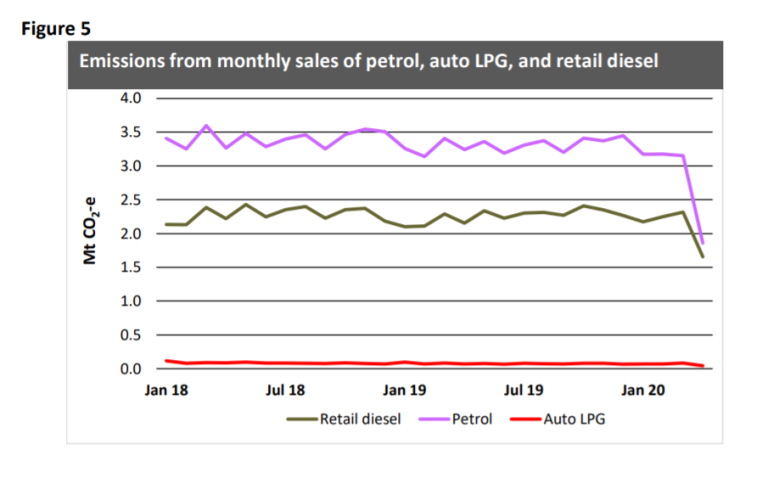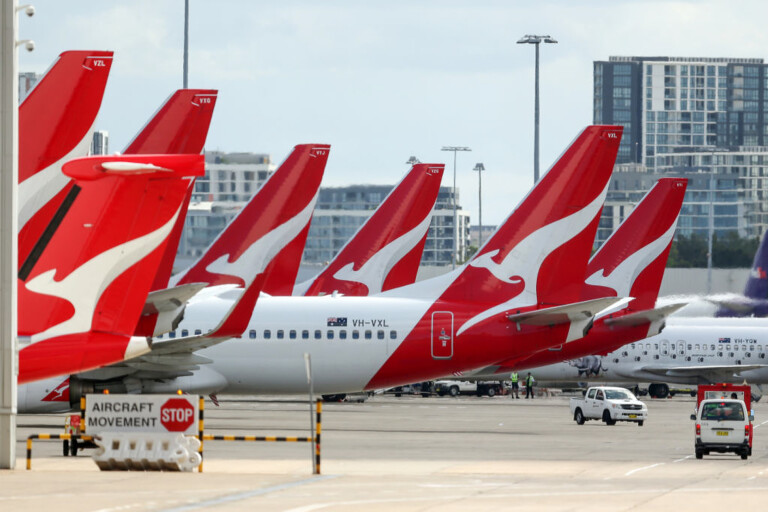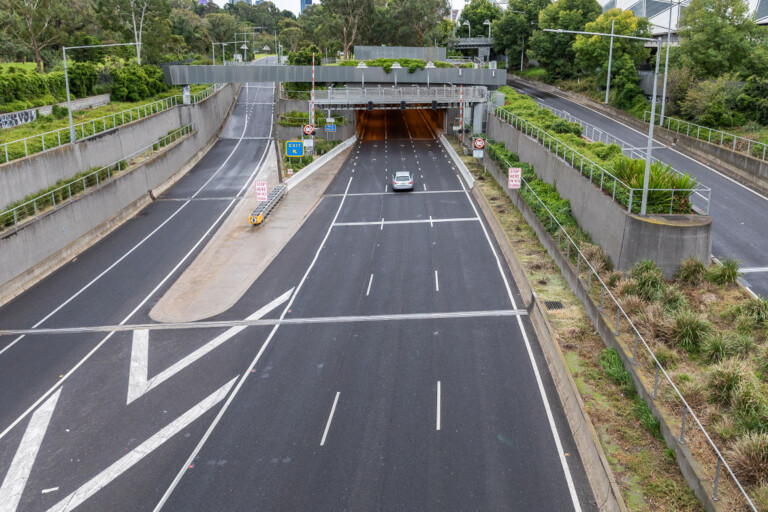
As Australian businesses emerge blinking into a post-COVID world, the massive impact on fuel sales – ergo emissions – over the last few months has been revealed in new data released this week.
And if you think the skies look a little bluer, you’re not mistaken. Almost five million tonnes of carbon dioxide, or almost two percent of Australia’s annual totals, was stripped from the atmosphere as private vehicle and aircraft use plummeted.
Retail petroleum sales fell by 36 percent in April while aviation fuel sales fell by 74 percent, leading to a reduction of around 2.5 million tonnes of carbon dioxide across the transport sector alone.

Another 2.5 million tonnes was saved in the electricity generation sector, where a coincidental rise in renewable energy production crossed paths with a fall in coal-fired electricity production.
“In total, the drop in sales volumes means a reduction of about five percent in annual domestic transport emissions and this number will keep growing, as the economy remains depressed and travel restrictions remain,” said Dr Hugh Saddler, author of The Australia Institute’s National Energy Emissions Audit.
“This demonstrates it is possible to quickly and effectively reduce domestic emissions in the transport sector, but it is obvious that as pandemic restrictions ease, policies incentives to increase electric vehicle uptake or investment in public transport will be needed for Australia to keep these emissions down.”
The institute also reports that emissions from the sales of petrol, auto LPG and retail diesel, which are used almost entirely for road transport, by passenger and light commercial vehicles, and some heavy freight vehicles, fell by a combined 36 per cent in April.
Emissions from bulk sales of diesel, together with the relatively small volumes of non-auto LPG and fuel oil, were almost unaffected. These are the fuels used in mining and heavy road transport, agriculture, rail transport, shipping and construction.

Sales of aviation fuels fell by 10 per cent in March, and a further 75 per cent in April, for domestic activity. Sales for international aviation use fell by 22 per cent in March, from an unusually high level in February, and a further 71 per cent in April.
The institute also noted the continual shift away from coal-fired electricity production, with emissions from electricity production falling sharply despite no decline in consumption.
Coal-fired energy production, in particular, fell to below 70 per cent of what’s known as grid-level generation (electricity generation minus rooftop solar production), a level it hasn’t been at since the 1980s.
A new high in wind energy production was also noted, as new wind farms in Victoria scale up to full operation, with renewable energy making up close to 20 percent of grid-level generation.

“Now is the ideal time to drive change in our transport sector by electrifying our cars and buses, so it’s disappointing the Federal Government has delayed its Electric Vehicle Strategy, due mid this year,” said Richie Merzian, the climate and energy program director at The Australia Institute.
“Australia is car-taker not maker, and most car manufacturers are moving to electric vehicles. The Federal Government could be investing in necessary infrastructure now to smooth the inevitable transition away from fossil-fuelled transport while building the know-how and jobs Australia needs into the future.”
COMMENTS